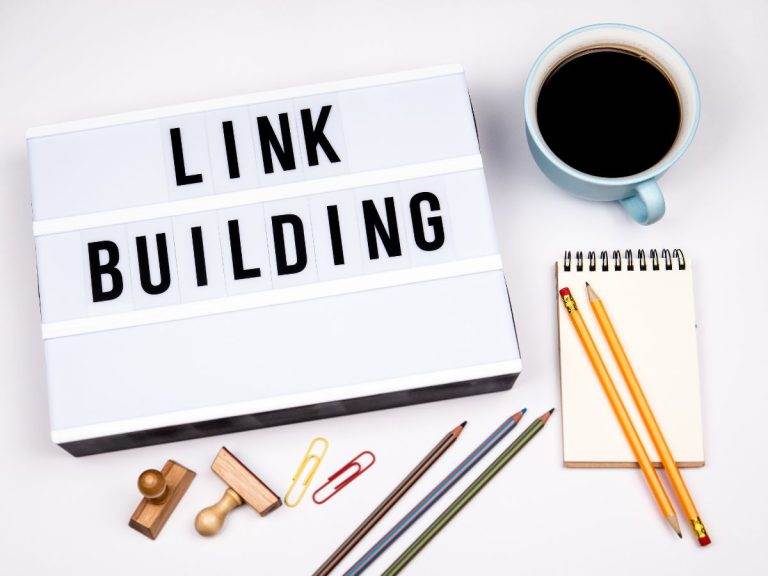10 most common SEO mistakes and How to avoid them
SEO is like playing the drums, you can implement it in weeks, but it takes time to master. Correct me if I am wrong,
You decide to start digital marketing. The first step you will do is to concentrate on SEO. You do keyword research, start a blog, and find a few phrases bringing in massive traffic. You optimize your website, get links, and see; your site is climbing the search results.
But it suddenly stops. You cannot move on to the first page. You are doing your best, I tried everything, but nothing is helping. “Where did you go wrong?”
We keep making many SEO mistakes that we didn’t even realize. You should learn more, make a few adjustments, and observe the effects for better results.
Before starting, you need to be clear about the types of SEO. There are two types of SEO: black-hat SEO and white-hat SEO.
Black hat SEO is the websites that steal content and buy links. Conversely, white hat SEO is an amazing website with fresh content and prioritizes the user first. The concluding point is to avoid black hat SEO.
Ten most common SEO mistakes
1. A weak internal link structure:
An internal link is a potent way to help users navigate your website. Most importantly, it passes the “link juice,” a compelling way to increase traffic. You need to apply the right way to use the internal links.
How to avoid
a. Stop stuffing keywords
Optimizing your anchor text is essential, but you shouldn’t stuff the exact match anchor text in your internal links. It was worth trying in the past, but you pick up a penalty today. Your website will even get de-indexed.
It is best to disregard keywords and focus on writing the best content. This way, you are likely to rank organically for the phrases.
b. Keep a shallow website structure.
Today, users are very demanding. They expect everything to complete fast. It is obvious why one should bother to get through additional links. It’s annoying and frustrating.
Make sure to link all the important pages. Reduce the number of clicks it takes to get to the relevant pages. Your website shouldn’t be more than two clicks away from a call to action. An example of a bad internal linking structure is where there are orphan pages and no consistent linking pattern.
An example of a good internal linking structure with a consistent linking pattern and no orphan pages.
c. Keep a reasonable number of links per page.
More the number of links, the less link juice you spread. An excessive number of links can symbolize spam for search engines. It is also boring for the user to scroll down an endless list of resources. Reduce the number of outgoing links.
d. Use alt attributes in the images.
The alt attribute in the image acts as an anchor text for the image links. It is an opportunity to send a ranking signal to a search engine.
e. Make it natural
This is the most powerful strategy. It implies you don’t care about the links or SEO tricks. Create links for your user that give them further information on their queries.
Note: Use tools like Website Auditor to check and manage your internal links.
2. Optimizing for the wrong keywords:
It takes years of experience to get an understanding of keywords indeed. Choosing the wrong keyword is one of the common mistakes. You must analyze the competition, understand the user intent, and decide what content will work best.
You invested time crafting a good piece of content, but it’s not driving the expected traffic. More than likely, you are optimizing for the wrong keywords.
How to avoid:
a. Don’t go for the exaggerated volume
Volume doesn’t always matter; it is only a part of the equation. You will never rank for the first page if it is so competitive. Sometimes you need to have patience and opt for the low competition. A low-volume keyword brings in people that convert. It helps you bring in a large amount of traffic every day.
Never forget about the long tail keyword. A long-tail keyword helps to specify your audience.
Don’t target the same keyword throughout the site:
Rather than spreading your keyword all over the site concentrate on one page with the page authority to rank. In SEO, you must pick and focus your battles if you don’t want to get destroyed.
This strategy also commits the abominable SEO sin of keyword cannibalism. Keyword cannibalization means you have various blogs that can rank for the same search query.
If you target the same keyword throughout the site, you will compete against yourself. Don’t let killing off your pages. Each page has an opportunity to roll in more traffic for different keywords.
b. Use strategy
Great keyword targeting means looking at the big picture of the entire site.
Another blind mistake in keyword research is not setting a long-term plan. What keyword do you want to rank top for a year from now?
Think a step ahead, and create a long-term strategy.
c. Don’t forget about the ROI
ROI stands for Return On Investment. A magic pill for keyword targeting is to maximize ROI for every keyword targeted. Here is a simple calculation technique:
ROI for a keyword = Value of ranging high/cost of ranking high
Where,
The cost of ranking high = time and money invested in ranking high
The value of ranking high = per visit value * search volume
And,
Per visit value = value of a brand impression + (conversion rate * conversion value)
Focus seriously on these calculations. Your review will dramatically improve your keyword targeting effectiveness.
3. Forgetting about local:
One critical SEO error is not managing Google my business listings.
Google is placing importance on “near me” searches. Google’s Pigeon has opened up a new field of local SEO. It is an opportunity for small business to claim their location.
The business should ensure its NAP (Name, Address, and place). This is not only an opportunity. It also shows that you are sharing correct information. Plus, your customers will be able to find you easily.
Note: If you provide local services, reflect the local intent. Include the city names to target the keywords.
4. Irregular website auditing
You work hard for SEO and get the expected outcome, and now you entirely abandon it. This is one of the most significant mistakes we make.
SEO is not like winning the race; you are the winner forever. Things keep on changing. It is like a never-ending game; if you leave it, you will lose it.
Website auditing reviews your website performance from the SERP’s view. It aids a webmaster on your website. Your forms, information, content, ranking, and website quality are reviewed. It identifies and improves shortcomings that may result in Google penalties and affect ranking.
If you don’t run an SEO audit, you leave money on the table.
Note: MySiteAuditor, Screaming Frog, and WooRank are excellent free website audit tools.
5. Low-quality/duplicate content
As the internet has expanded, it is hard to find worthy content. Focusing on different aspects of SEO, we ignore the important one: quality. The quality of content has diminished drastically.
The main problem is that you want to rank for a targeted keyword but fail to focus on your target audience. Google launched Panda, which focuses on quality content. So, your primary goal in creating content should be producing content corresponding to the user query.
How to avoid:
a. Focus on unique content
People are tired of reading the same things again and again. You need to be creative and put a new slant on old ideas. A personal touch with professional writing is a need factor for bloggers.
People like to read the information that solves their problems. If you can utilize original research, you will succeed in creating a unique piece.
Make necessary corrections with grammar, spelling, and facts. Even if you don’t have good writing skills, you must have excellent proofreading skills.
Search engines interpret the quality of the reading level. You can discover your score using software like Grammarly. I usually use Grammarly as my proofreader. When it comes to complex information, I appear to be successful. You can also use a plugin like EasyWPSEO.
b. Know your chronobiology
It doesn’t feel to fit, but it does. We all have a different natural rhythm for creativity. Some of us bust out the best before breakfast, and some couldn’t write coherent sentences until noon. Scientifically we call it chronobiology: our biological clock.
Know your biological clock and write in your productive periods. Schedule your day so that your creative time is free of trivial tasks. Add images and videos for better communications:
People learn differently. Some learn better by seeing, while others by hearing. Use pictures, videos, and diagrams to illustrate your point.
But it doesn’t mean you will put a series of additional pictures and videos. Only add images and videos that add value.
Keep it organized and straightforward. Don’t run after the word count and wander off to multiple trails. An excellent post is short and stuck to a single topic. Get more ideas, split them, and create a series. Don’t stuff it at a place.
c. Regular update
You write and abandon your blog; you won’t get new readers. Search engines also don’t favor the site that is not regularly updated. Continuity is best applied here. It is not only about a single post, but it is about your site. Google doesn’t crawl for the site with sporadic posting.
How often should you update your post? It depends on you. You should at least update it twice a week. A good blog takes time to write and research. When proofreading, ask yourself the following things: Are there any heavy words? Is your content worthy of solving the question?
6. Horrible mobile experience:
SEO is also about the design; its performance on devices on top choice today.
With more users on mobile, you need to ensure a strong mobile experience. Google can recognize if your website is mobile-friendly or not. It is evident: that mobile experience, no love from Google!
How to avoid:
Online tools like Pingdom and GT Metrix can analyze and fix speed problems. To create mobile versions of your website, you can easily use: Wirenode, Mippin Mobilizer, MobilePress, MoFuse, etc.
7. Placing the important text in Images rather than on the page:
An image is something that makes a good appearance. Creating an image feels more effective than coding the effects around the text. It is not always favorable in SEO. Search algorithms look for text and don’t count the text inside images.
Your text is the king of your content. Put your words on your page to get indexed.
8. Leaving the old URL structure in place when redesigning a site:
A huge mistake that should be counted from revamping a website without redirecting traffic from the old URL to a new one. No one can find you if you make a new site and remove the old one. Your site will display a page not found message.
Google will naturally rank you down for such blunders.
How to avoid:
Use 301 redirect
301 redirects all your old site automatically to the new page on the new website. Your customers won’t even realize that you have changed the URL. Google’s search engine can determine what is happening on your website. It realizes it should show a new URL in its search result instead.
Most importantly, 99% of your link juice built up on that old page will now flow to the new page.
9. Not having Unique titles and meta descriptions:
Some company titles their every page with the company’s name. What are they doing? Be clear; it is a damaging mistake. Every page of your site should have a unique title. It is not just for SEO; it creates competition between your pages.
We know Google has clearly stated that meta descriptions are not crucial, but they matter. Meta descriptions indirectly affect SEO. You can say meta descriptions are a sales pitch of 160 characters. It plays a significant role in CTR (click-through rates) and bounce rates.
10. Thinking SEO overnight:
You have spent thousands of dollars and hours on SEO, but it’s not getting any results. You will be like, “What’s wrong? It’s not working.” But don’t stop to continue. SEO is not going to complete overnight. SEO is not an easy, fast, and cheap process. You need to be indexed first. You will not get any search traffic if Google doesn’t know you.
If you want long-term success, there are not any quick magical tricks that SEO will provide. It is important to note that SEO’s potential is only as high as the quality of your business website.
So, how long does it take?
You cannot answer how long it does take. There is a lot that goes into it:
How old is the site?
How secure is the website?
How high is the competition?
How much are you pushing for it?
How much are you investing in?
And the final element, Has your website had a penalty or spam?
With all these analyses, the time duration differs. If you are a brand new site, you will not get any significant gains until 9-12 months. You may gain traffic, but you will not get any ROI.
If your site is old and has already got credibility, and you are ranking for a few terms, you could see quick results. And finally, if you have a penalty on your website, you will not see any return until the individual issue is resolved. If you stick to SEO, you will end up being one of the dominant players online. It will be your best investment.






